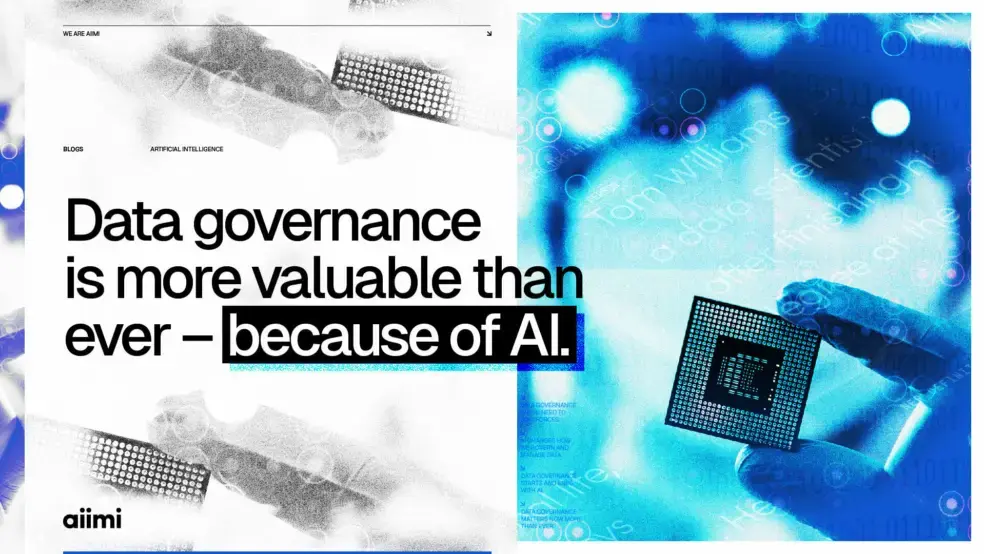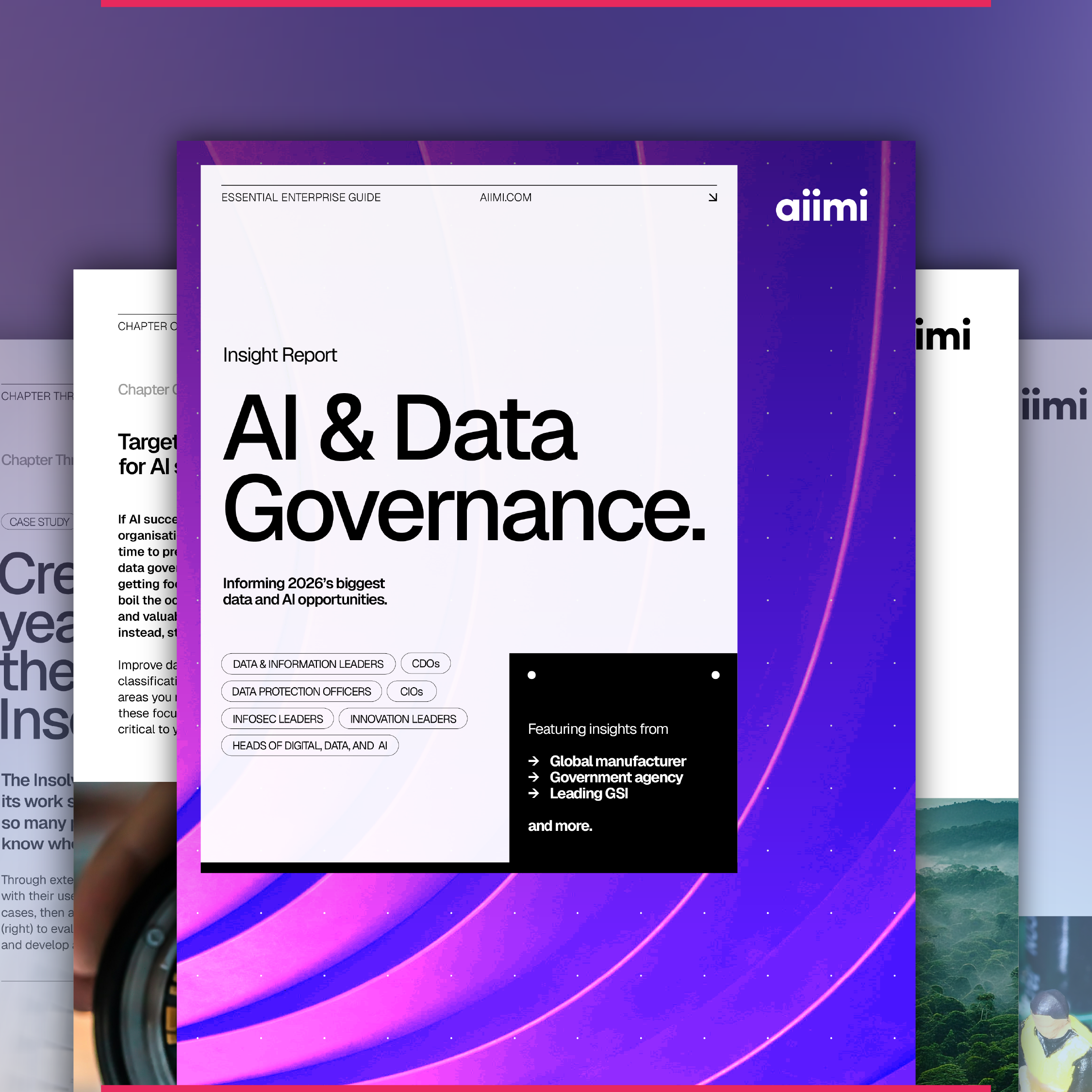Data governance is more valuable than ever – because of AI

If you’ve worked in the data and information management space for as long as I have (it’s coming up to 35 years since my first job in Enterprise Content Management), you’ve no doubt seen a few long-running data governance projects. And they’ve probably not gone well.
Mostly, these ambitious data governance projects stall when it becomes apparent that the task is too big and isn’t aligned to business objectives. Manually labelling and classifying data becomes tedious, errors creep in, and user engagement starts to drift. After years of trying to address the entirety of an organisation’s data governance needs simultaneously, there’s no clear end in sight – and, most importantly, there’s no obvious return on investment.
Data governance projects don’t always lead to nowhere, of course. Any level of governance, consistent labelling, and engagement from data owners and users must be positive. Still, the real value in data governance – the kind you can measure and attribute results to – has always been in improving the quality, completeness, and relevance of the data that feeds your most critical decisions.
Now, AI has come along with the promise of accelerated innovation, critical decision-making, and efficiency at a scale like never before. But AI needs the right data to deliver on these big promises.
AI has added fuel to the data governance fire; in fact, it’s pretty much burned the house down. The rules of data governance – how to start, where to start, and what you can achieve with good data – have totally changed.
We have the chance to create a whole new set of founding principles for modern data governance.
Data governance and AI need to join forces.
Here’s how I see data governance and AI working together.
Firstly, it might be time to say goodbye to extensive data governance initiatives altogether. At Aiimi, we’re starting by reassuring customers that they don’t have to boil the ocean; instead, start small and stay focused. Improve data governance, data classification, and data quality in the areas you need it most. Importantly, align these focus areas to AI use cases that are critical to your business. Find the areas where there will be a clear return on your investment in managing and improving data quality. Most often, these areas tend to be aligned with AI priorities.
When you start by asking ‘What questions does my organisation want to answer with AI?’, you give yourself a narrower field of vision to seek out the data that matters most.
Here are a few examples of the questions data leaders have brought to me:
Water Utility – For every live burst or pollution event, can you tell me the root cause and best next actions ASAP (using email and messaging communications from teams who’ve previously fixed the same or similar issues). Better yet, can you predict the next burst or pollution event and recommend actions to prevent it, or where we should deploy resources just in case?
Manufacturing Company – How do we fix a faulty machine that has broken down for one of our customers (using knowledge of previous faults and fixes from every employee who has ever worked here). Even better, can you predict which machines are likely to fail, adjust the servicing schedule, and recommend maintenance jobs to avoid failure in the first place?
Local Authority – When a resident or employee initiates a Data Subject Access Request, can you collect all the data we need to disclose, redact anything that could identify other people, then send to a manager for review?
Armed with valuable questions, you can start to figure out what data you need to answer them. As part of the process, there’s always going to be due diligence; does the necessary data exist in your business? Is this going to be a worthwhile experiment?
If the answer is a resounding ‘yes’, you’ve found your first opportunity for a data governance experiment – the first in a series of manageable, value-aligned slices. And if you can get this working, you’ll go far towards reforming the view that data governance means hefty five-year transformation projects that don’t deliver a return.
AI changes how we govern and manage data.
When I talk about tackling data governance in slices, I don’t just mean doing it on a smaller scale – it needs to be automated. AI and automation have a huge role to play; they make complex data governance manageable, achievable, and far more effective.
Data governance has to address how we set permissions and where we store data. Every enterprise is full of hundreds of systems and sources, each with their own complex permission structure, and AI needs to navigate this. Even when only focused on a handful of sources, it's one of the biggest challenges data governance leaders face when supporting AI initiatives – how can I provide the relevant data for AI to answer our questions, and enforce security considerations? It’s a crucial step to get right, because we now know that AI works best when you can give it a narrow view. By shrinking your data world down, you ensure AI uses only the most relevant, high-quality data available to generate answers.
To achieve this, we can turn to classification and labelling to identify what the data is, what it relates to, and who should be able to see it. In the past, you might have asked users to take this on – select an option from a dropdown here, tick all relevant labels there. Over time, this gets messy; inaccuracies and inconsistencies creep in – it’s just human nature. Again, AI can help us here too.
By combining natural language technologies with unsupervised Machine Learning techniques, you can automatically classify data. Starting with clustering to establish course-grain groupings for data and validating this with users, we can then train an AI model to run classification at a larger scale. AI can now add labels, e.g. for a document that has been classified as an invoice, it can capture the payee details, invoice number, payment date etc, all automatically. By using feedback from users to reinforce the model’s training, AI gets better the more data it classifies and enriches.
And once the rules of the game are set, we can even use Agentic AI to go and do our filing for us, using automated classification and labelling. AI can move files according to complex permission structures, flag the latest versions or ‘golden records’ for a single source of truth, and so on – and it never gets tired or sidetracked.
When you’re focused on providing data to power a business-critical AI initiative, quality and completeness rise to the top of your priorities. Luckily, AI is really good at finding and filling gaps in data too, reaching much further than humans could. If there are gaps in your structured data, Large Language Models can seek out the relevant data in your unstructured content, joining the dots to build a more complete, high-quality picture of your data.
So, back to our original challenge: how do we provide our critical AI initiatives with only the most relevant, high-quality data? With your data (both structured and, crucially, unstructured) labelled accurately, shrinking your world down and finding what you need for AI – information retrieval – becomes simple.
Data governance starts and ends with AI.
Perhaps you can see where I’m heading? The promise of AI can be a powerful motivator for tackling slices of data governance, to improve data quality in preparation for strategic AI initiatives. But AI should also be a tool that helps us achieve better data governance, faster.
And the value of using AI to automate data governance lies not just in getting data AI-ready. There are huge returns to be gained from using AI-enabled data governance to drive traditional IT and systems projects, like migrating from legacy systems, archiving data, exiting a datacentre, or moving to the cloud. AI can identify unused or duplicate data, spot overexposed data according to its classification, and even help widen access to knowledge that shouldn’t be locked down. For one global professional services firm that Aiimi has worked with, automated data governance saved £1m in storage costs within six months, by removing obsolete data. Through automated data governance, they’re now laying the foundations for their internal Data Service, curating gold-standard data for almost 30,000 employees.
When AI is this good at managing and classifying data, realising value from data governance no longer has to take years and involve every data owner and user. A lack of buy-in and participation from users doesn’t matter in the same way – AI only needs us to oversee and validate. AI means scale is no longer a problem; data is growing faster than ever, but AI keeps up. It doesn’t lose interest after a few months; it stays alert to changes at any point and updates classifications or metadata accordingly.
Data governance matters now more than ever.
If there’s one takeaway I hope to leave you with, it’s this: the value of data governance is greater than ever, and the chance to join the dots between this crucial data work and the strategic AI agenda is a golden opportunity for CDOs and data leaders.
Your AI initiatives need the benefits of effective data governance. And your data governance needs to be transformed with AI. Don’t sleep on the chance to do both.
Stay in the know with updates, articles, and events from Aiimi.
Discover more from Aiimi - we’ll keep you updated with our latest thought leadership, product news, and research reports, direct to your inbox.
You may unsubscribe from these communications at any time. For information about our commitment to protecting your information, please review our Privacy Policy.



